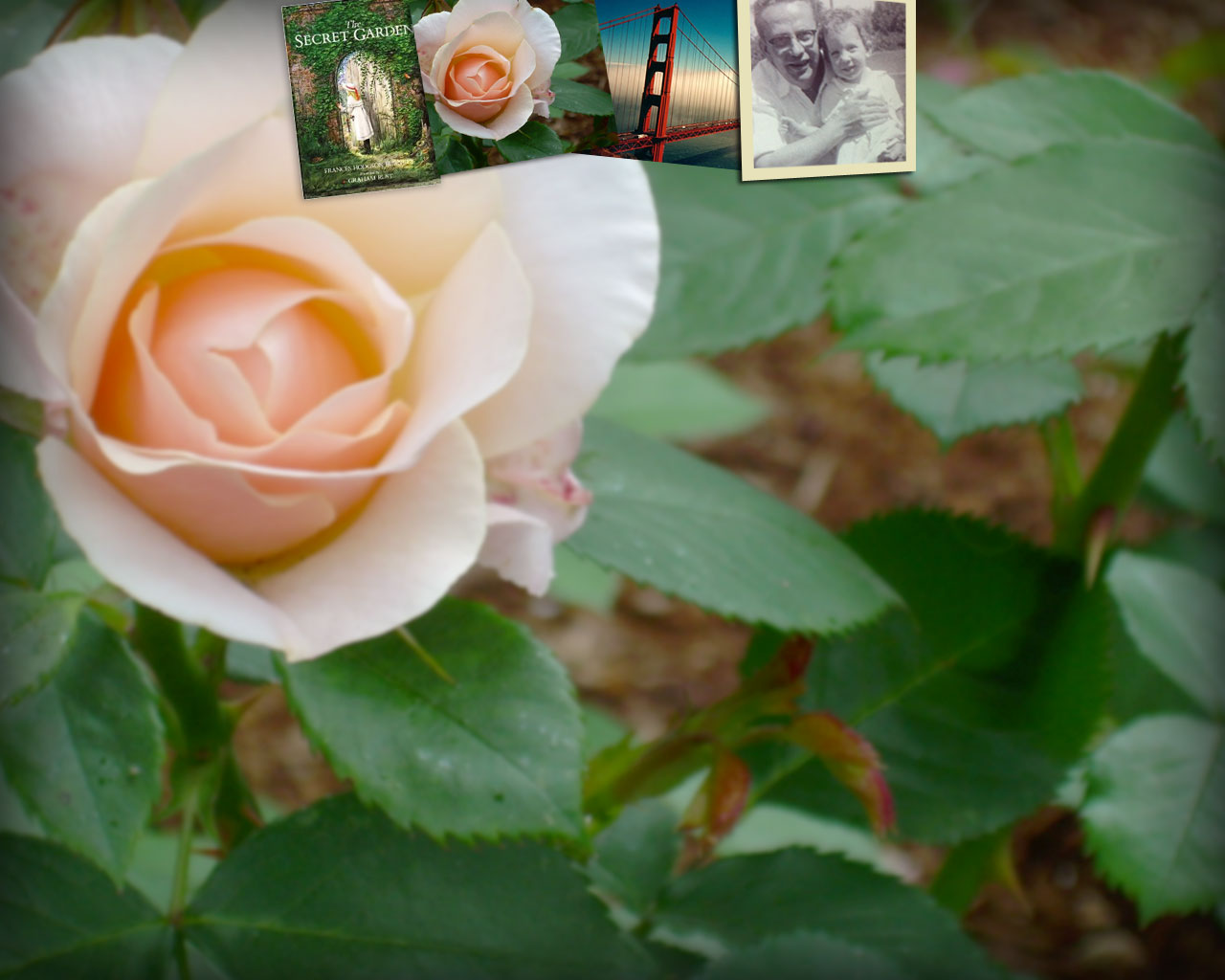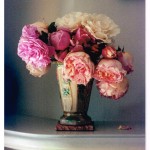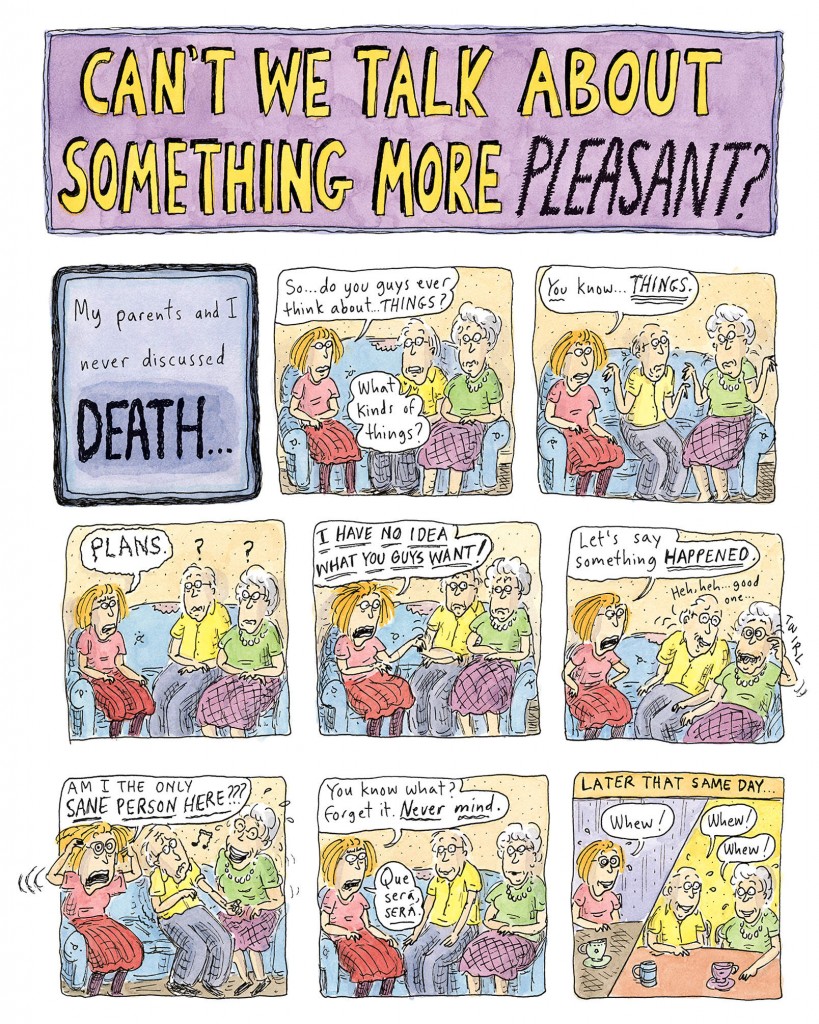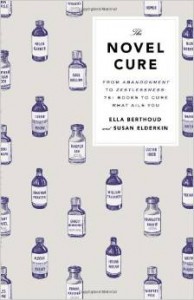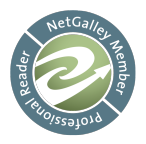How I Became a Rose Nerd
I was in Safeway, watching hapless men buy long-stemmed red roses for Valentines Day and silently cried “oh you poor guys, those aren’t real roses!”. But 20 years ago, that too was all I knew of roses. Then my mother gave me this little book and it changed everything. Therefore, the subtitle for this post is: It was all my mother’s fault.
 Once upon a time—before the 1860s—people loved old roses like “Baronne Prevost” “Marchionesse of Lorne,” or “Autumn Damask.” These were roses from the garden, richly scented and overflowing with petals. The trouble was once cut and arranged, the beautiful blossoms only lasted a few days — oh but those few days were a visual and perfumed delight. The artists of the time captured such lush rose arrangements even including their fallen petals.
Once upon a time—before the 1860s—people loved old roses like “Baronne Prevost” “Marchionesse of Lorne,” or “Autumn Damask.” These were roses from the garden, richly scented and overflowing with petals. The trouble was once cut and arranged, the beautiful blossoms only lasted a few days — oh but those few days were a visual and perfumed delight. The artists of the time captured such lush rose arrangements even including their fallen petals.
Then some enterprising nursery folks developed the hybrid tea roses (as in those long stemmed red roses at Safeway). These were easier to arrange (fewer thorns), more dramatic (brighter colors), and longer lasting (an arrangement of store-bought tea roses can last up to two weeks). But the saddest part of these new roses, was they had no scent…highly scented roses tended to be more delicate and less sturdy. So they bred the scent right out of these florist favorites. As so the old roses were all but forgotten.
But as In Search of Lost Roses tell us, these gently-hued, richly perfumed old roses made a comeback, thanks to the efforts of a crew of eccentric characters who rescued them from back alleys, ramshackle cottages, and overgrown graveyards across the country. Mr. Christopher recounts the fascinating stories of the old roses—how they were created and named—and the unforgettable people who saved them. We go from Texas to California to the American South to visit the interesting people who love and search for lost roses. It’s pure adventure as we join a group of “rose rustlers” as they sneak into secreted walled gardens, tramp through abandoned lots, climb over fences and visit forgotten cemeteries all in an effort to take and propagate cuttings from these old roses.
We meet the famous British old rose experts (Graham Thomas and David Austin*) and learn of how American pioneer wives brought rose cuttings from their far-away homes, lovingly keeping them damp during the journey. Even the rose nomenclature is full of politics, lost loves and secrets. Mr. Christopher’s discussion of rose genetics and propagation was fascinating – well at least to this rose geek. “Heritage’ or ‘heirloom’ roses are defined as those bred before 1867. No two old roses are alike – they come in all shapes – flattened, quartered petal formation, cupped or “overblown as a crinoline petticoat”. I devoured this book, taking notes, and reading bits aloud to my husband who just stared at me quizzically.
Turns out a major hub of old rose fanatics is here out west, where old roses came out with the Gold Rush and were planted around the miners shack doorways, in parks and at loved ones gravesides. When I closed the book I had a list and my mission was clear must — have — these —roses.
My first trip was to the Celebration of Old Roses just across the Bay.
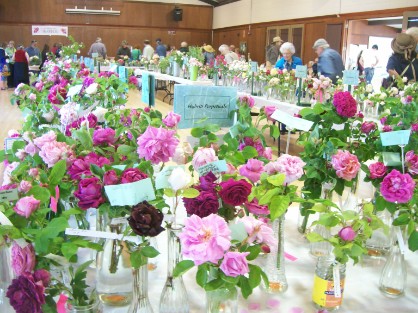 I stopped short, here was a huge room filled with old roses of every color, size, type — and readers — the scent was intoxicating – my idea of heaven on earth. Every rose was identified and categorized — China, Moss, Portland — (I could go on but I’ll save you the yawns). I took notes, talked to growers, got advice for my garden (ocean facing, high winds -not great for most roses but with these hardy old roses, I had a chance), and bought my first old rose bush Monsieur Tiller. I met the celebrities of the old rose world – Miriam Wilkins and the infamous Barbara Worl invited me to visit her garden in Palo Alto during the coming month. I came home happy, exhausted and full of plans. My poor husband quietly mentioned, “but I thought we have a drought resistant garden, roses need a lot of water you know”…I turned a deaf ear and secretly vowed to take shorter showers.
I stopped short, here was a huge room filled with old roses of every color, size, type — and readers — the scent was intoxicating – my idea of heaven on earth. Every rose was identified and categorized — China, Moss, Portland — (I could go on but I’ll save you the yawns). I took notes, talked to growers, got advice for my garden (ocean facing, high winds -not great for most roses but with these hardy old roses, I had a chance), and bought my first old rose bush Monsieur Tiller. I met the celebrities of the old rose world – Miriam Wilkins and the infamous Barbara Worl invited me to visit her garden in Palo Alto during the coming month. I came home happy, exhausted and full of plans. My poor husband quietly mentioned, “but I thought we have a drought resistant garden, roses need a lot of water you know”…I turned a deaf ear and secretly vowed to take shorter showers.
My next trip, suggested by Mr. Christopher’s book was here.
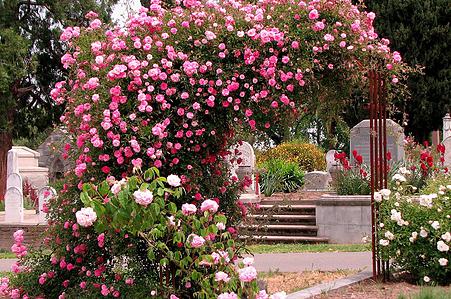 The Sacramento Historic City Center Cemetery. Leaving home at the crack of dawn (not my finest hour), I joined a rose tour of the cemetery during which we were allowed to take a few cuttings. Then a workshop on starting roses from these cuttings -their technique uses zip-lock bags with soil, proper number of days closed and open, then you monitor the root growth …wow sorry — I started to geek-out there.
The Sacramento Historic City Center Cemetery. Leaving home at the crack of dawn (not my finest hour), I joined a rose tour of the cemetery during which we were allowed to take a few cuttings. Then a workshop on starting roses from these cuttings -their technique uses zip-lock bags with soil, proper number of days closed and open, then you monitor the root growth …wow sorry — I started to geek-out there.
Soon I was happily starting roses from cuttings “obtained” on our trips. Click on photos to make larger
A climbing rose from an ocean front lodge in Mendocino 
 A ‘found rose’ from a roadside in Croatia.
A ‘found rose’ from a roadside in Croatia.
 I have many David Austin Roses – here’s one of my favorites – James Galway
I have many David Austin Roses – here’s one of my favorites – James Galway
And like all rose nerds enthusiasts, I mess around for hours arranging my cut roses and then walking by just to smell and admire them.
And so the tale is told, this is the little book that started it all 20 years ago. Both the back and front gardens boast old garden roses and the deck has potted roses struck from cuttings I’ve rustled.
My name is Book Barmy and I’m a rose nerd.
But all geekiness aside, I dare you to read In Search of Lost Roses and not come away wanting at least one old rose for your garden.
Warning, I have another rose book to share with you at a later date — now that will keep you coming back.
* David Austin has developed a modern collection of old garden roses which are disease resistant, repeat blooming and have divine scents. I have many of his lovely roses. For some idea of their beauty click HERE
Can’t We Talk About Something More Pleasant? by Roz Chast
 I heard Roz Chast talking about her newest book on NPR and bought this memoir the next day. I strongly recommend getting this book in the hardback versus the electronic version, as you want to experience her cartoons and text laid out as she intended.
I heard Roz Chast talking about her newest book on NPR and bought this memoir the next day. I strongly recommend getting this book in the hardback versus the electronic version, as you want to experience her cartoons and text laid out as she intended.
I inhaled this book in two sittings. I’ve long been a fan of Roz Chast’s cartoons in the New Yorker and elsewhere, so this was an insight into a moving part of her life.
This is a cartoon (with prose) memoir of her aging Jewish parents – well into their 90’s and, although always independent and self-sufficient, now in decline. As their only child, Ms. Chast tries to muddle through their needs – wanting to respect their pride, while still caring for them with their weakened health and memory issues.
Sounds dreary? Wrong! This is a funny, moving and soulful accounting of caring for aging parents that is in fact deeper and more insightful than a cartoon memoir might appear.
Some of the humor is laugh-out loud funny, other times I found myself laughing uncomfortably but through her cartoons, Ms. Chast is able to assure us that the negative, frustrated feelings in this difficult situation are as important and valid as the positive, loving feelings. It shows the complicated emotions dealing with aging parents – especially when they’re resilient, resistant and proud.
If you’re a fellow baby boomer (hate that term, but OK) and dealing with these issues or already have – you will gain insight from this book. The ending is devastating and emotional, but the entire memoir is TRUE and honest – frightening and yet lovingly funny. Yes, that’s it – lovingly funny, honest and true. Read it.
This is the Story of a Happy Marriage by Ann Patchett
 I’ve read almost everything by Ann Patchett (Magicians Assistant is one of my all time favorite novels) so I was clambering to read this collection of her essays.
I’ve read almost everything by Ann Patchett (Magicians Assistant is one of my all time favorite novels) so I was clambering to read this collection of her essays.
I was surprised to find it available for checkout as an ebook though the S.F Library system – Score!
It’s lovely to have this collection of her personal essays from various sources (New York Times, Harpers, Granta, etc.) all in one place. As I hoped, the essays give an insight into the author; her writing career, her marriages, her dogs, her discovery of opera and her bookstore -Parnassus Bookstore in Nashville, Tennessee. If you’re an Ann Patchett fan you will definitely enjoy this.
However, there was one essay “Do Not Disturb” which disturbed me. She has a house full of guests getting on her nerves, so she ditches them to her husband’s care and flies to LA to check into the Bel-Air – seriously? She is a successful author and can certainty afford it, but this seemed over the top.
Otherwise these essays are fun, insightful, not too sticky-sweet and very readable.
Some favorite quotes: “Playing the cello, we’re more likely to realize that the pleasure is the practice, the ability to create this beautiful sound, not to do it as well as Yo-Yo Ma, but still, to touch the hem of the gown that is art itself.”
“The love between humans is the thing that nails us to this earth.”
“There can be something cruel about people who have had good fortune. They equate it with personal goodness.”
(On her husband Karl) “He encouraged me in everything I did. His answer to every question was yes. He was proud of me, and he never found a way to undermind my success or spoil a happy moment.”
The Novel Cure by Ella Berthoud & Susan Elderkin
From Abandonment to Zestlessness – 751 Books to Cure What Ails You
Advance Review Copy from Penguin Press
This is a fun and wacky reading guide. It’s a browsing book and, if like me, you’ll keep it next to your reading chair and dip in for short 3-5 page reads. It categorizes books for us bibliophiles — but not in a way I’ve ever seen before.
The book gives book recommendations by ailment categories such as Constipation – (Shantaram by Gregory David Roberts) to Road Rage – they recommend audio books to dissipate a driver’s fury – to the best books to read in a hammock . This book surprises, delights and slightly irritates.
While some of the categories/recommendations are expected – under Racism is Invisible Man, Being Short lists The Hobbit, the book surprises with titles placed in unlikely categories — to offset Loneliness they recommend Tales of the City by Maupin so you can feel a part of a gang of neighbors. Under Hating your Nose is Perfume by Patrick Suskind. Sometimes the book irritates with many cross-references, over-zealous use of parenthesis, and some shallowness. Also, the proof copy lacked page numbers for the much-needed indexes at the back. The actual book will be much improved with that feature.
For wackiness – investigate the the section labeled Diarrhea which recommends books for the bathroom. And some categories are contrived – as in Hemorrhoids – nothing more to be said there.
The book synopsis vary widely – ranging from well-written and poignant to flippant and shallow. This is not the Guide to English Literature, nor is it a great literary work – but I don’t think authors meant it to be.
I found the “Reading Ailment” sections inspiring as they focus on the reading life, book collecting and advice — – “Depletion of Your Library Through Lending”, “Being Seduced by New Books” (my weakness) and “Reading to live more Deeply”.
One of my favorite of the reading ailments was Finishing, fear of:
You have been delighted by the books, befriended the characters in the books, wolfed down the book, dreamed about the book, missed the book, cried with the book, made love to the book, thrown the book across the room, been dead to the world outside the book – and now you are about to finish the book. We’ve all been there: it is a terrible gutting moment.
But do not despair. You do not have to leave the world of the book behind. As soon as you’ve finished the book, read around the book — reviews, literary criticism, blogs, whatever you can find. Talk to other people who have read the book. Watch the film of the book. Read the book in another language. And then, finally, re-read the book. The best books, by the greatest authors, will stand up to being reread many times in a life and indeed give back more each time. In this way you will never finish the book. You will become the book, and it will become a part of you. You have not reached the end. You are, in fact, just beginning.
Finally, in the Reading Ailment section labeled “Overwhelmed by the Number of Books in the World” I discovered I’ve missed my calling – becoming a bibliotherapist – is there a course for this? Sign me up!:
Consider booking a consultation with a bibliotherapist who will analyze you reading tastes, habits and years, as well as where you’re at in your personal and professional life, then create a reading list tailored especially for you.
